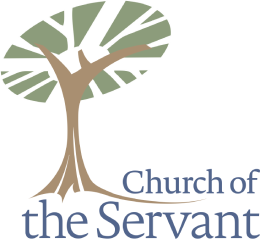Values used in selecting songs for each service
Prayer – first and foremost, music planners pray for and trust the Spirit’s guidance in their music selections
Music is chosen to be:
- Fitting for the scripture texts chosen for the service
- Fitting for the location in the liturgy (i.e. an opening hymn of praise v. a communion song or a sending song)
- Fitting for the liturgical season
- Fitting for our congregation
- When choosing global songs, choose songs that are near to the hearts of refugees and immigrants within our own church
- Balancing songs that are meaningful to the 80 year old in the congregation and the 8 year old (and everyone in between)
- Being mindful of those who don’t read well (i.e. young children, those with intellectual difficulties, those with poor eyesight, those for whom English is a second or third language), or those who have other sorts of difficulties in worship
- Textually excellent
- Biblical
- Theology of the lyrics matches that of COS
- Simple texts that lend themselves well to meditation, and complex texts that open up scriptures to us in new ways
- Musically excellent
- Singable for the congregation (limited musical range, lower tessitura, no big leaps in melody, simple rhythms, simple form)
- While simplicity is important for congregational singing, we also value musical interest (i.e. surprising, but natural chord progressions; beautiful melodies; beautiful harmonizations)
- Integrity of the music and text – the music and text enhance each other rather than work against each other
- Variety in selections for each service
- Pulled from many sources
- Eclectic choices not for the sake of novelty, but as a reminder that we are worshiping with saints from around the world and throughout time
- Balance of song types – traditional hymns, contemporary songs, Gospel/Spirituals, Taize refrains, global songs, chants, indigenous song (i.e. written at COS for COS)
- Balance of songs about us and about God; us talking to God, God talking to us, us talking to each other; balance between songs that use “I” versus “we”
- Balance of songs that are cyclical versus strophic; simple text and refrain on which to meditate versus multiple, well-developed, theologically rich stanzas
- Balance of songs with differing energy levels – slow and contemplative v. upbeat and energizing
- Balance of songs that familiar and unfamiliar – every service should have plenty of familiar music in which the congregation can easily participate. Less familiar and new songs should be limited and chosen carefully, and placed carefully into the liturgy.
- We also value the variety we have from one service to the next because of the variety of volunteer music planners
Specifics for certain liturgical spots:
- Opening song(s) should be familiar to help people join in the worship from the beginning. New songs are better placed as the Psalm, the sermon response or in the middle of communion.
- Sermon Response
- Can ask preacher for a direction, or for their desired mood and response from the congregation
- When a sermon direction isn’t evident, can choose a generic response
- The response can be a song of thanks for the word
- Communion sequence
- Movement in song texts – text that flow well from one to the next; the texts could tell a story or one song could be a “call” and the following song a “response”; texts that move from cross to resurrection, sadness to joy, etc.
- Key signatures and rhythms/vibes of each song flow well from one to the next
- Want variety and flow
- What songs make sense for the beginning of communion (i.e. a song about coming to the table) v. songs for the end of communion (i.e. thanksgiving for the meal and sending out)
- Integrity of composers – we don’t want to sing songs (and therefore pay for using songs) that have been written by those who have abused their power within the church)
